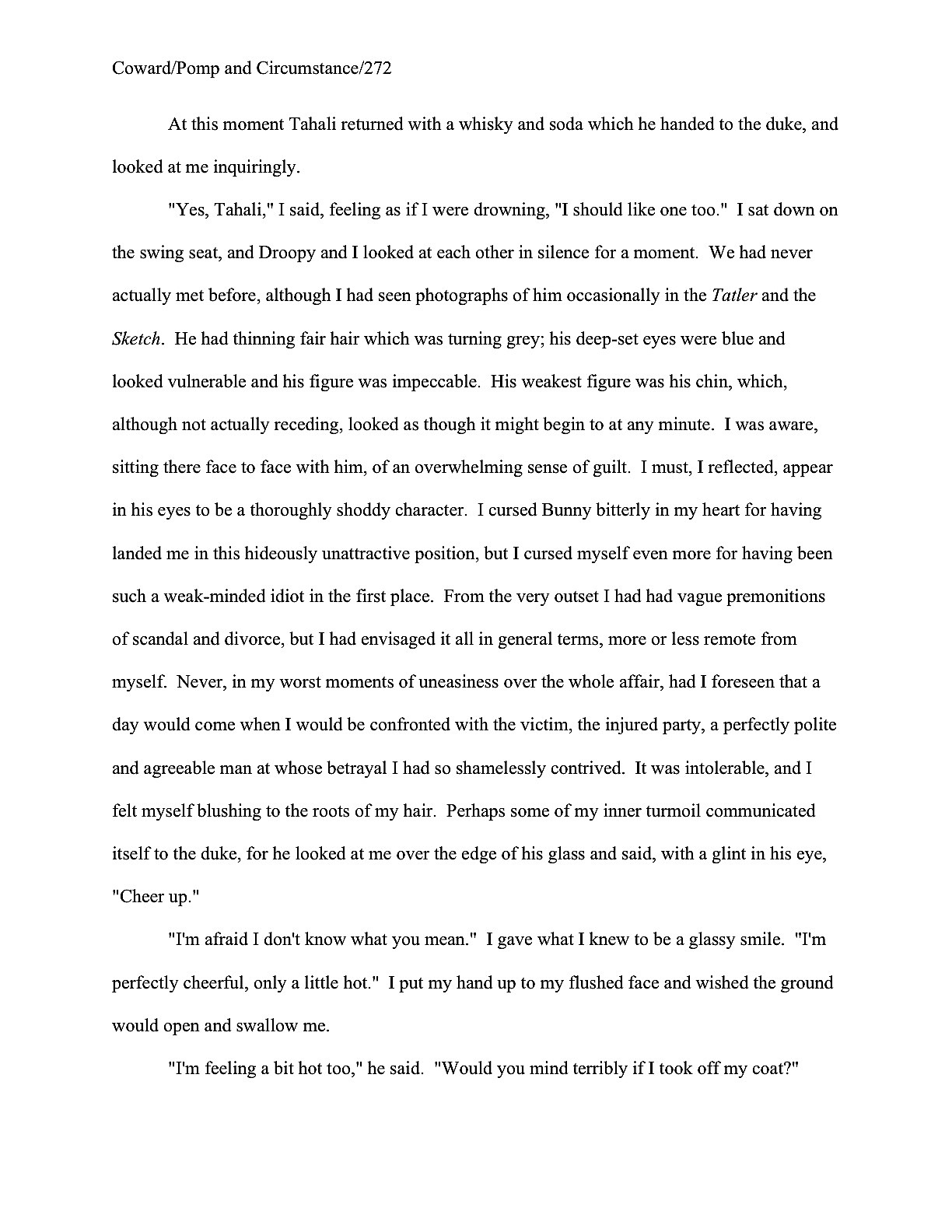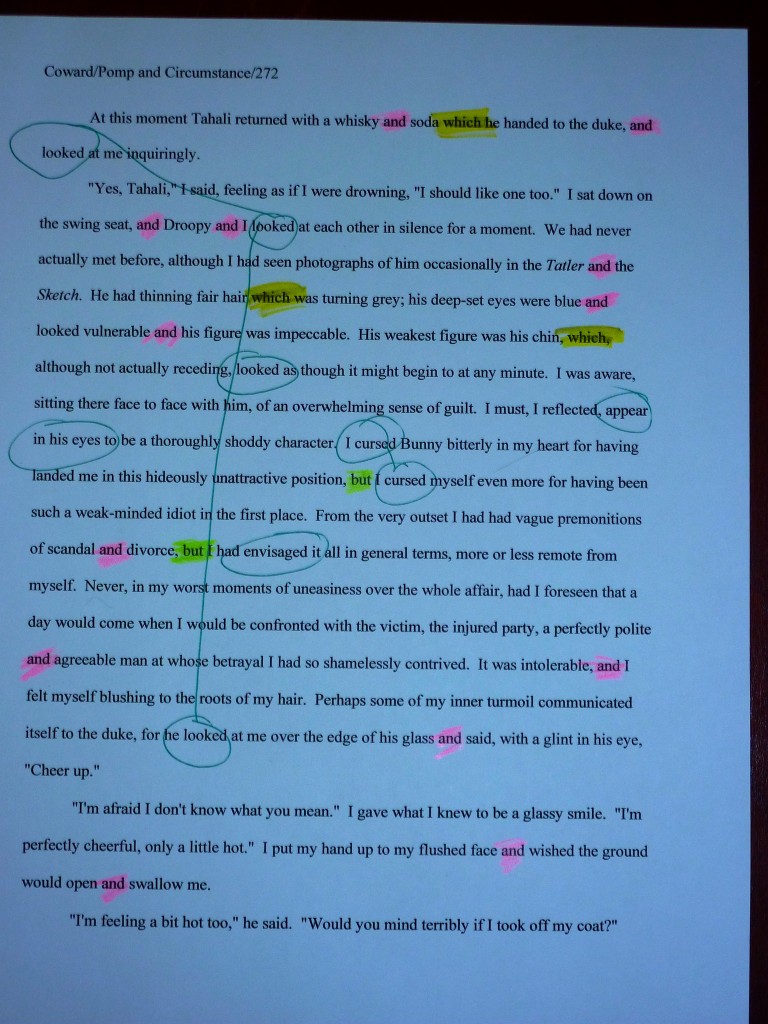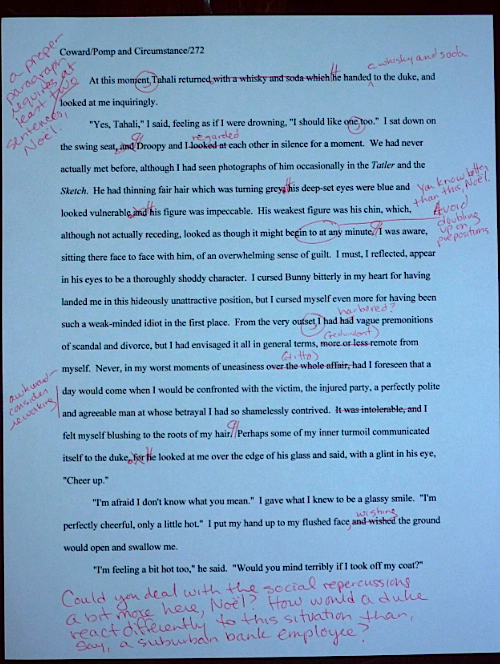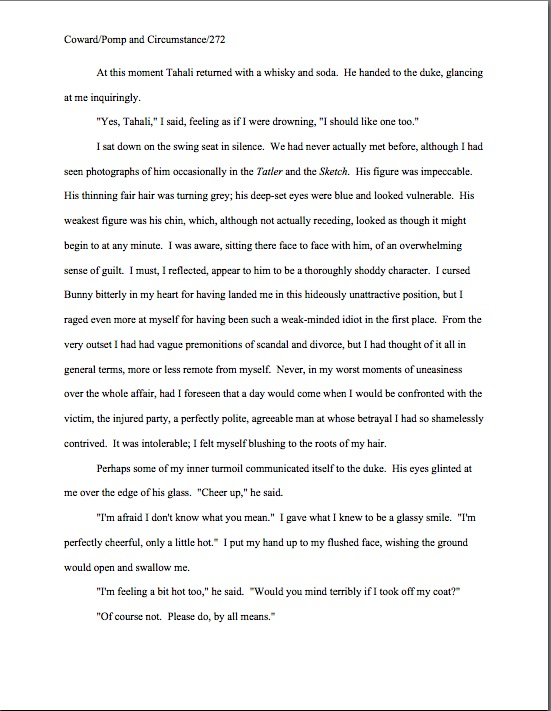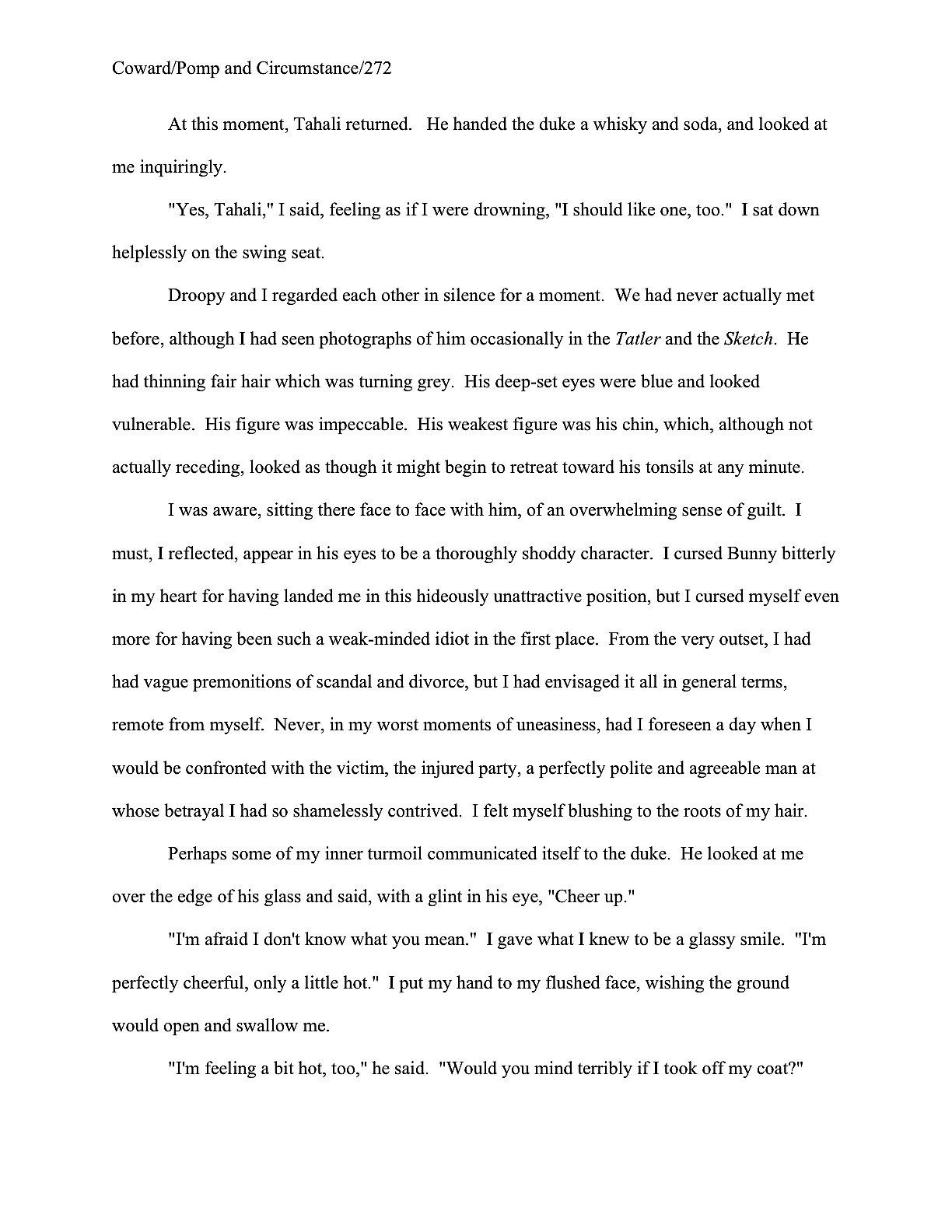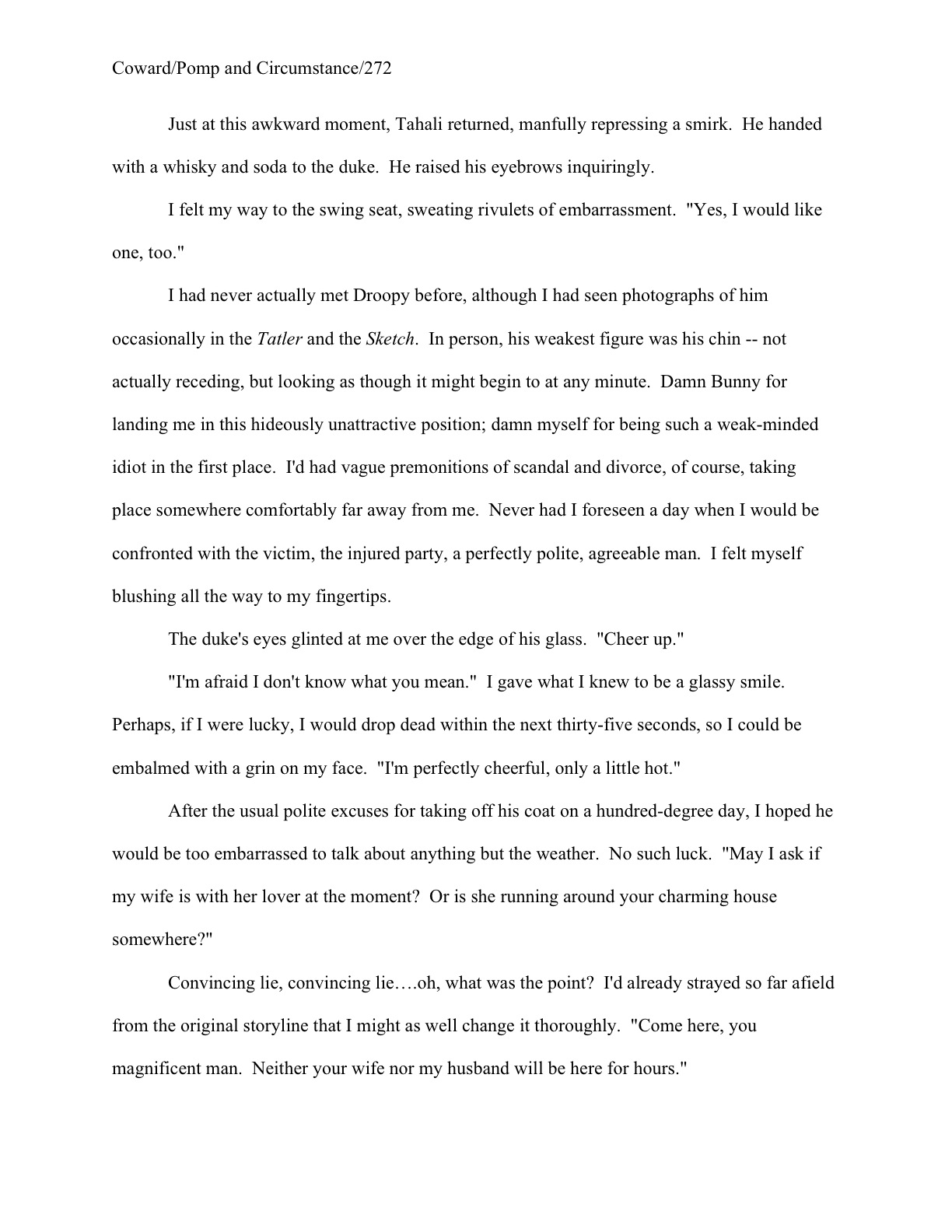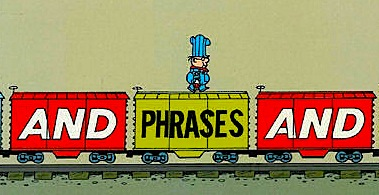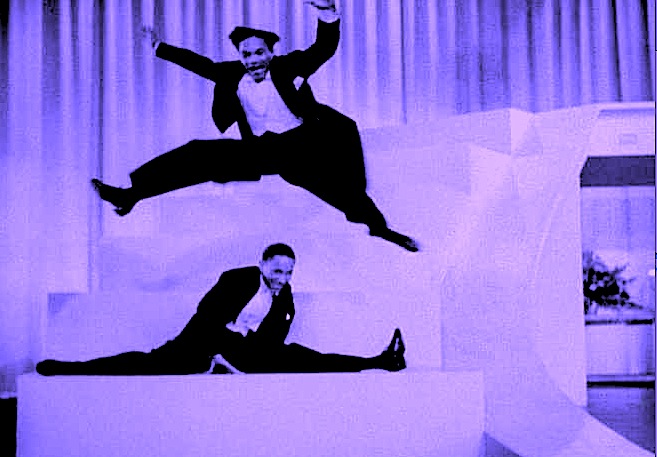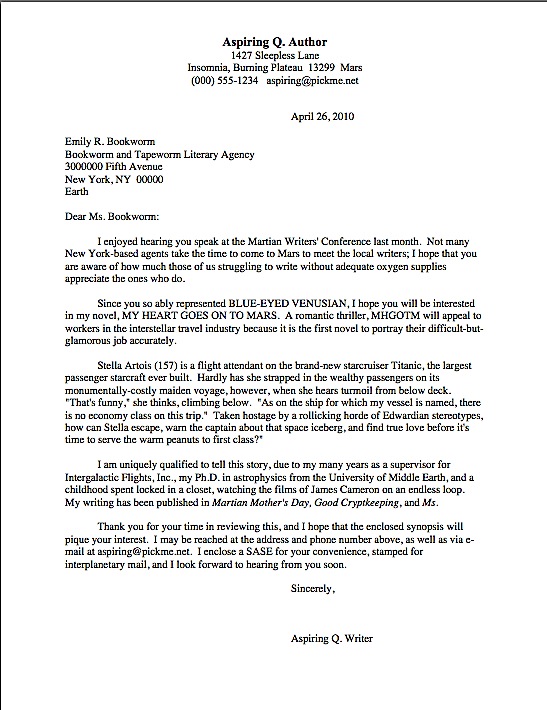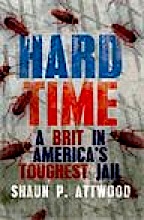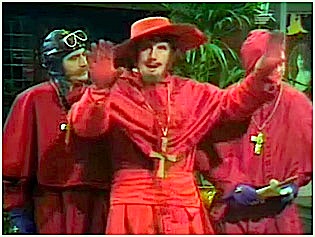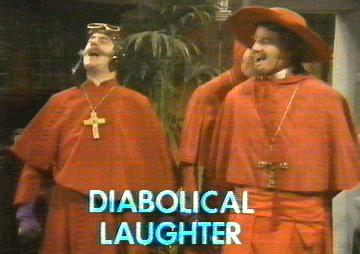
I’ve got show-and-tell on my mind today, campers, and not only because this lengthy series on Frankenstein manuscripts — works that have been written and rewritten so often and/or over such a long period of time that they read like the stitched-together remnants of several authors’ voices — has been quite heavy on practical examples of late. No, I’ve been thinking about concept illustration because the author reading I attended yesterday was provided such a glorious pragmatic illustration of a point I brought up last time, the necessity for a good reviser (or good writer, for that matter) to consider not only his own point of view when deciding whether a passage of text was clear, but also a reader’s.
To recap for the benefit for those of you who missed it: I suggested, albeit gently, that if the action on the page is confusing to a reader — say, our old nemesis, Millicent the agency screener — it’s the writer’s responsibility to clarify the writing, not the reader’s to figure out what is going on. Especially if that would mean going back and re-reading the sentences in question; Millicent simply doesn’t have time to do that.
So what is her usual response to prose that leaves her guessing? Chant it with me, those of you who have been following this series faithfully: “Next!”
Because writing is a solitary art — yes, even after one lands an agent and sells one’s book to an editor — it’s astonishingly easy to lose sight of the end reader, particularly in the revision stage. When we writers are up on our high horses, we tend to talk about our artistic visions and the importance of being true to our voices, but while we’re being down-to-earth about it, we have to admit that if we can’t (or won’t) take the time to make those visions and voices accessible to the reader AND at least somewhat pleasant to read, we aren’t completing our mission.
Does that mean dumbing down complex concepts or compromising original voices? No, not if revision is performed intelligently. It does mean, however, that the writer of a Frankenstein manuscript owes it to any complex concept that might be lingering with in it, as well as to her own narrative voice, to try to read the text as a reader might.
Why, you may be wondering, was I pondering this necessity at an author reading? For the same reason that I often find myself musing about how easy it is for a writer to get stuck thinking about his text from only a writerly perspective: as is lamentably often the case at such readings, the author read excerpts from her book in a monotone, without once lifting her eyes from the page to connect with her audience.
A great pity, because actually, the scene she chose to read was well-written, beautifully paced, and contained some genuinely surprising plot twists. As if the Muses had gone out of their way to demonstrate to this author just how much she was underselling her own excellent prose stylings, the venue had booked a second author to read at the same event, one whose obviously well-rehearsed, excitingly voiced reading, punctuated by frequent merry glances up at her fans, kept the crowd enthralled.
Now, I have nothing but sympathy for the shy; I happen to enjoy public speaking, but I know that it positively terrifies many. Reading one’s own work in public is hard — which is why, incidentally, I would STRENUOUSLY recommend that any and all of you who intend to see your work in print some day start practicing reading it in front of others as soon as humanly possible. Reading well out loud is something that few of us manage to pull off the very first time we try, after all.
Like so many other skills required of a professional writer, public reading is a learned skill, one that requires practice to perfect. It also requires — you saw this coming, didn’t you? — the writer to take the time to consider what that passage of perfect prose might sound like to someone who, unlike herself, might not have read it before.
Sounds familiar, right? It should: a writer’s ability to step outside his own head and consider what’s actually on the page, rather than what he thinks is on the page, is crucial to good revision.
Case in point: the question we have been discussing over the last couple of posts, the delicate balance between referring to characters by name often enough for clarity, but not so much that all of those capital letters distract the reader’s eye and send Millicent’s hand groping for the form-letter rejection stack. This is a problem that’s not likely to trouble the sleep of a writer who doesn’t think much about what her readers might be taking away from any particular page of her story, right?
In fact, the very question might strike her as just a little bit stupid. “Why, I should have thought that was obvious,” she would huff.
If the writing on that page is clear, her intended meaning may well be obvious; if not, her submission could well end up confusing Millicent — or, still worse, expecting her to fill in gaps in logic, background scenery, character motivation…
You know, all of those thrilling, character- and plot-revealing details that we talk about so much here at Author! Author! as the hallmark of expressive prose. Millicent’s on the lookout for style, recall, not just a gripping story. If she — or any reader, for that matter — has to devote even a few seconds of her scant time with your submission to sorting out confusing logistics, unclear character motivations, or just plain trying to figure out what’s going on, that’s a few less seconds she is spending noticing how likable your protagonist is and how gracefully you describe cloud patterns, right?
I couldn’t help but notice that not all of you immediately shouted, “Right, by Jove!” Does it seem a trifle hostile to literature that our Millie tends to concentrate far more on a submission’s faults than its beauties? Okay, let’s step into in her practical two-inch heels for a moment, and consider the strengths and weaknesses of the kinds of manuscripts we’ve been discussing.
Got your Millicent cap firmly pulled down around your ears? Excellent. Picture four manuscripts before you, each written by a talented writer eager for a break. Which one will you decide to show to your boss, the bigwig agent, and which three will you reject? Your choices are (1) a narrative that assumes you will put in extra effort to sort out what is going on in certain confusing passages, like so:
He woke up with her hair in his mouth. She rolled sideways. Trees swayed outside the unfamiliar window, giving him no clue of his whereabouts. Ow — his knee! He pulled on his boots.
(2) A submission that just summarizes the story, leaving you to fill in most of the details, rather than providing interesting and surprising specifics from which you might derive your own impression of what’s going on, thus:
Fritz woke up dazed, disoriented, under what seemed to be a pouf of somebody else’s hair. There was a girl next to him; for the life of him, he could not remember her name, nor did the trees swaying outside the window give him any clue about where he was. His knee hurt, as if something had smashed against it recently. He had to get out of there. He crept out of bed, pulled on his boots, and left.
(3) the most extreme form of Frankenstein manuscript, one so rife with spelling, grammar, perspective, and consistency problems that even its author appears not to have taken the time to read it all the way through.
But, I wake up with her hair in his mouth. She rolled sideways, pearing at the unshaven face near to her foot. No help there so quite as a mouse, I syruptitiously looked at the trees outside the window, but they didn’t tell me where I had managed to get myself to. Something had cracked against his knee. Where had those darned boots gotten to, and who was this girl anyway?
(That one was genuinely hard for me to write, by the way; I kept having to undo my instinctive corrections.)
(4) A manuscript where the writer has clearly taken the reader’s perspective into account sufficiently to clarify all of the relevant issues of the page, skillfully using a plethora of telling details to convey to the reader a complex reality and consistent enough in tone that you can discern, however faintly, an individual authorial voice.
Fritz woke up gasping for breath. Was he being smothered under a fuzzy scarlet blanket, or had his bangs grown down to his mouth, choking him with a lamb-like pouf of curly hair? Wait — his hair hadn’t been curly since he had been the spelling champion of Mrs. Chellini’s third-grade class. His dim memories of her classroom seemed like Technicolor spectaculars, compared to his recollection of last night.
He yanked a particularly wavy red lock from the corner of his mouth, following it gingerly — better not move too much, head — across the rough Navaho blanket to its source. The mascara-streaked face wasn’t familiar, but the Hooters t-shirt was. Tammy, maybe? Tina? And was that blood on his bare knee? No wonder it hurt: that gash would need stitches.
Tell me, Millicent-for-a-day: which would you choose to pass on to your boss, and which would you reject?
There’s nothing wrong with expecting your reader to draw conclusions from what you say on the page, but much of the time, style lies in the essential difference between showing and telling. If the writer chooses to beguile the reader with enough details about a situation that he walks away from the scene with the mental image the author intended, that’s showing. If, on the other hand, the writer elects to tell her tale in generalities, or to spell all of the necessary conclusions for the reader instead of allowing the reader to draw them for himself, that’s telling.
Of course, to write a complex tale, you’re probably going to have to do both. Let’s face it, telling can be quite useful from time to time, particularly in a fast-paced action scene or a chunk of narrative that needs to cover a hefty chunk of passing time. More often than not, however, writers use summary statements as a kind of shorthand writers to get past activities that are necessary to the plot, but just don’t interest them that much.
Which brings me, conveniently enough, to one of the most commonly over-used verbs in manuscript submissions — and, not entirely coincidentally, to one of Millicent’s lesser-known pet peeves. Contest judges complain vociferously about it, too, so I could not in good conscience polish off our discussion of textual redundancy without talking about it. Not that I mind: this particular phenomenon is a favorite bugbear of mine as well, because its astonishingly pervasive use tends, in my experience, to flatten description and characterization.
Have I piqued your curiosity sufficiently yet? And have I given you strong enough evidence that withholding information from the reader purely for the sake of building suspense is darned annoying?
Actually, one forward-thinking reader was apparently thinking about it before I even started building up the false suspense, for she brought it up in the comments just the other day. Quoth Elizabeth — not the same one with the excellent pronoun question from last time, as it happens, but another frequent bringer-up of thought-provoking points:
I did buts and thens and I’m working on ands right now.
I had a lot of “looked” in there, too, I noticed, after my first revision. That’s a very hard word to avoid.
Elizabeth is quite right that looked is ubiquitous. Aspiring writers rely upon it, and upon vision-related verb phrases in general, quite heavily, and not always because most human beings glean most of their information about the world around them through their eyes.
Often, characters — particularly protagonists — will look things as a means of introducing those things into the narrative. This is particularly common in first-person or tight third-person narratives, as a means of reminding the reader from whose perspective she’s seeing. As in:
I looked at the beautiful blue sky and the hopeful buds on the green trees; they made me sad.
That’s one way to alert the reader to the existence of the buds on the trees and the beauty of the sky — which is, we are told explicitly, blue, as opposed to all of those other colors beautiful skies are always sporting — but it’s not the only narrative possibility, and usually not the most imaginative one. Think about it: what’s more interesting, the fact that the trees are budding hopefully, or the fact that our narrator saw the buds?
Even if the image hitting the narrator’s cornea actually were the most important part of this particular sentence, in most storylines, the point of the protagonist’s looking at things is not the action itself, but to alert the reader that the objects being seen exist. Unless this device is used — wait for it — very sparingly, though most readers will tire pretty quickly of being told over and over again that the protagonist is seeing or noticing everything around her. To them, it’s self-evident: the object is present in the environment, so naturally, the protagonist sees it. So?
Millicent’s reaction, as usual, is quite a bit less forgiving. “Stop telling me over and over that the protagonist is seeing things!” she will mutter, reaching for her third latte of the afternoon. “You don’t need to keep reminding me of the narrative perspective!”
So what’s a reviser to do with this type of Millicent-annoying look? Cut ‘em without mercy. With a little careful planning, it’s almost always possible simply to have stimuli external to the protagonist just show up, without reminding the reader that the players in the scene have seen them or having the protagonist acknowledge their existence.
Once a reviser accepts that principle, it’s usually quite a bit easier to winnow out most of those looks. Fringe benefit: because this approach encourages the things in question to be more active, the result is often a more vibrant narrative. Lookee:
The sun shone in a cloudless sky, sending a caressing warmth to encourage the hopeful buds on the green trees. Their very exuberance made me sad.
Another extremely common use of looked is as a substitute for other reactions or emotions. Frequently, characters look at one another instead of evincing a more revealing response to something that has just happened.
All of a sudden, the wind chime over Vanessa’s left shoulder began ringing violently; Gerry’s chair seemed to be slipping sideways beneath him. They looked at each other.
“What’s happening?” Imogene cried.
Doesn’t add all that much to the scene, does it? That’s because from the reader’s perspective, the mere fact that Vanessa and Gerry chose that moment to look at each other isn’t all that illuminating. Described this flatly, it’s such a generic act that mentioning it doesn’t either advance the plot or reveal character. As you are revising a passage like this, ask yourself: how did they look at each other? Why did they look at each other?
Or, better still: is there something that one or both of them could do or say here that would do a better job of advancing the plot and/or revealing what these people are thinking or feeling in this particular moment?
Be on the lookout, so to speak, for versions of she looked away, a sentence widely used as shorthand for a character’s conscious attempt to avoid conveying emotion to another character. While flesh-and-blood people do actually look away from one another from time to time, and for that very reason, this phrasing, too, can start to feel pretty redundant if characters do it very often.
Besides, looking away is also not usually the most interesting reaction a character can have to a stressful situation. Frequently, this action is a drama-killer, a means of allowing a character to avoid a direct confrontation. That may be desirable in real life, but since Millicent likes to see conflict on every single page of a novel or memoir, do you really want to squander a golden opportunity for injecting more of it into your story?
In short, you’re going to want to take a close look at all of those looks, evaluating on a case-by-case basis. Each time it appears, ask yourself: is this an effective way to convey the meaning I want to the reader, or is this just shorthand? Would the plot or characterization would benefit from a different kind of sentence?
What you should NOT do, however, is simply do a search for the word and cut every use indiscriminately. You’re going to want to exercise your judgment — always bearing in mind, of course, that the reader cannot read your mind, and thus may not interpret shorthand in quite the way you intended. You can’t blame her for that: since all she knows about the story you are telling is what the narrative shows and tells her, if you don’t fill in the details, she has to rely upon her imagination.
Don’t believe that little old look could do quite so much damage all on its own? Oh, but it is used in so many context to mean so many things. To sharpen your eye to the sneaky little verbs many tricks, let’s take a gander at few frolicking in their natural habitat.
He looked at me passionately. “But I want you to marry me, Mary!”
Quickly, I looked down at the fringe decorating my skirt. “I think you should go, George.
“Go?” He gave me a look of disbelief. “Didn’t you hear what I just said?”
I looked up. “Didn’t you hear what I just said?”
Taken individually, each of these uses of look is perfectly legitimate, right? But the problem here isn’t just the word repetition — it’s that looking is acting as a stand-in for a whole lot of potentially interesting human interaction.
Don’t look away — we already know what do in this situation, right? When confronted with characters merely looking in response to stimuli, we ask: could they have more character-revealing (or situation-revealing) responses?
The possibilities are endless, of course — which is precisely why I’m a big fan of this particular revision strategy; it can open a simple scene up in some fascinating ways. For instance:
He kissed my hand passionately. “But I want you to marry me, Mary!”
I abruptly became absorbed in studying the fringe decorating my skirt. “I think you should go, George.
“Go?” His tone implied that I’d just asked him to leap off a fifty-foot cliff. “Didn’t you hear what I just said?”
So much for sparing his feelings. “Didn’t you hear what I just said?”
Is everyone comfortable with the prospect of tackling all of those looks in context, retaining some, and coming up with interesting and creative substitutes for others? Good. Now that you’ve started thinking about revising with your reader’s reaction in mind, let’s go back and apply the principles we’ve been discussing to the problem of proper noun repetition in a manuscript.
Oh, did you think we were through with that? Not a chance — over the past few posts, we have established a method for dealing with word repetition, right? Now that we have added the last tool, placing ourselves behind the reader’s spectacles in order to figure out whether the over-used word in question is serving the narrative well, to our writer’s tool belt, aren’t you just dying to trot out the whole set of wrenches?
I’m going to take that look you’re all giving me as a yes.
Suppose for a moment that in mid-revision, you have suddenly become overwhelmed with doubt: have you been over-using proper names? Rather than panic in the face of such a dreadful possibility, you know precisely what to do: first, ascertain just how many of the darned things there are in your manuscript, so you may see just how serious the problem is — and where to begin to attack it.
So you, wise soul, print up a hard copy of your manuscript, pull out your trusty highlighter pens, and mark every time a character’s name appears, dedicating one color to each character. After highlighting up a storm for a chapter or two, you go back and flip through the pages. If a single color appears more than a couple of times on a page, you know that you might want to see where you could trim.
This test, which can be used to diagnose any suspected repetitive pattern in a manuscript, will reveal the most about Millicent’s probable reaction if you begin marking on page 1, of course, rather than at some random point in Chapter 12. If you can only find time to do a few pages, though, you might not want to start marking on page 1. A good, quick check on your name-usage habits is to highlight a two-person dialogue between major characters from the middle of the manuscript.
Why a two-character scene, you ask? See if this pattern seems at all familiar:
”I’ve never seen that giant centipede before,” Tyrone lied. “It just crawled into the house, Mom.”
Angela placed her fists upon her ample hips. “I suppose it opened the back door by itself?”
“It certainly has enough legs to do it,” Tyrone said, examining it. “Or it could have crawled through the keyhole.”
“Next you’ll be telling me that the cat is the one who has been opening the kitchen cabinets,” Angela retorted.
“I’ve seen her do it!” Tyrone insisted.
Angela placed her hand upon his head. “Tyrone, I hate to break it to you, but cats don’t have opposable thumbs. Neither do centipedes. So unless you’re harboring a chimpanzee I don’t know about, I’m going to assume that human hands did all these things.”
The boy cast a nervous glance at his closet door; did Mom know about Archie? “If you say so.”
Did you catch the problems here? If you immediately said, “By gum, a skimming reader’s eye might mix up Angela and Archie, since they both start with the letter A,” give yourself a gold star for being able to remember that far back in this series. Take another star out of petty cash if you also murmured, “This writer is identifying speakers far, far more often than necessary. I wonder if the same pattern persists throughout the manuscript?”
In this excerpt, the pattern is clear, right? In case those baleful looks you’re giving me mean no, let me ask a follow-up question: how do we know that this scene doesn’t really require this many tag lines?
After the first set of exchanges, there really isn’t any doubt about who is speaking when, is there? So why does the reader need to be reminded so frequently who is who, when the speeches are alternating in a predictable rhythm?
The over-use of tag lines is quite pervasive in submissions, and for good reason: like over-abundant proper names, aspiring writers often believe that they reduce confusion. But to professional eyes, the author of the example above has apparently invented unnecessary opportunities for repeating her characters’ names.
Be on the lookout, too, for frequent use of relational terms as substitutes for names: her mother, my brother, her boss. Often, writers who lean heavily upon name usage will pepper their manuscripts with these, too — and again, physically marking them in the text is generally the best way to figure out if there’s too much pepper in your manuscript.
Okay, so that was a bad joke, but it was intended to soften a hard reality: until repetitions of these phrases are actually highlighted in a text, it’s well-nigh impossible for most aspiring writers to understand fully why this particular type of repetition drives the pros mad. Relationship repetition may seem merely descriptive or innocuous to a casual reader, but it leaves professional readers apoplectic; they read it as the writer’s insecurity about the reader’s caring enough – or not being smart enough — to remember how these people are related.
Speaking of over-reactions: “Criminy,” Millicent has been known to mutter. “Is there a REASON you feel the need to tell me three times per page that Roger is Yvette’s son?” Do you think I have no memory at all?”
Sound at all familiar?
In this instance, I think Millicent has some justification for feeling that the writer is talking down to the reader. Unless you are writing a story that will be published in serial form, as so many of Dickens’ works were, it’s not necessary, and can be downright annoying, to keep referring to a character by her relationship to the protagonist.
Especially when, as often happens, the reader is presented with the relationship from several different perspectives. As in:
Brenda looked up at her mother. “Are you sure he’s dead? Couldn’t it be another false alarm?”
Mona cradled her husband’s blue-tinted face in her wrinkled but bejeweled hands. “You’re thinking of my last husband, Martin, the swimmer. Bert’s not capable of holding his breath this long.”
“I didn’t say he was faking it.” Brenda lifted her stepfather’s lifeless arm, dropped it. “I’m just saying that there’s a big difference between comatose and dead.”
“Fine.” Mona kicked her purse at her daughter. “Root through there until you find my compact, and hold the mirror under his nose. If he’s alive, it’ll fog up.”
“For heaven’s sake!” Millicent will be crying by this point in the manuscript, startling fellow screeners in adjacent cubicles. “If Mona is the mother, OF COURSE Brenda is the daughter! What do you think, I’m an idiot?”
Generally speaking, the formal relationship between two characters, particularly if one of those characters is the protagonist, needs to be mentioned to the reader only once in a chapter, at most. If it’s a significant relationship, it may well need to be brought up only once in the book, unless there honestly are issues of mistaken identity involved.
Otherwise, try giving the reminders a bit of a rest.
While you have your marking pens out, it’s not a bad idea to check your submission pages for other instances of phrase repetition as well. I’m not talking about pet phrases here — come on, admit it: every writer has a few phrases and words he likes enough to reuse with some frequency — but overworked nouns and descriptive phrases. Those have a nasty habit of offending the professional eye, too.
You’d be astonished at how much the repetition of even a single verb in two consecutive sentences, for instance, can make a manuscript seem less interesting. Especially — and this is almost impossible to catch when editing on screen, but genuinely irksome to see on a printed page — if the same word or phrase begins or ends two or more sentences in a row.
If you are clever and professional-minded enough to scan your manuscript IN ITS ENTIRETY, IN HARD COPY and OUT LOUD (gee, where have I heard THAT advice before?), it will immediately become clear why: it reads as though the point of the paragraph is to get through the information within it as quickly as possible, rather than to write about it as beautifully as possible.
In a race run amongst the stylish, my friends, even a couple of lines that fall down on the job can cost you a head start. You’re in this to express yourself marvelously: try to be consistent about it, but use your best judgment on a case-by-case basis.
That’s such a pretty thought that I am going to sign off here for the day. Keep your reader in mind as you revise, campers — and keep up the good work!


